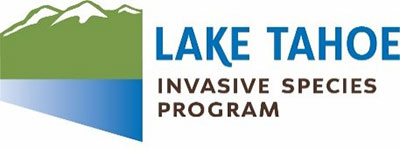Roadside Station Updates and Details
- July 4th all inspection stations report minimal wait times and few boaters in the queue.
- Masks are required when out of your vehicle.
- Show up Clean, Drained, and Dry to speed up your inspection.
- July 5th will be the final day of drop-in inspections and it is expected to be a high-volume day.
- Plan to arrive very early July 5 as wait times could be significant. Have patience and expect delays while at Tahoe.
- Appointments resume July 6 with most appointments fully booked through July. Use the appointment link below to check for availability and cancellations.
Lake Tahoe, CA/NV – Lake Tahoe watercraft inspections for aquatic invasive species (AIS) are on course for a record setting July Fourth weekend. With three regional watercraft inspection stations operating at capacity, today as many as 80 vessels were lined up early in the morning at stations to get the necessary inspection, more than has ever been seen before.
Since 2008, mandatory watercraft inspections for the prevention of aquatic invaders such as quagga and zebra mussel have protected the lake’s pristine ecosystem from harm. Invasive species can be impossible to detect, especially when larvae can live in standing water or boat ballast tanks for weeks. Over the program’s 12 year history, many lakes and rivers around the Western U.S. have become infested with AIS while Lake Tahoe has not.
In places like Canada boat mechanics are in demand, so if you are looking for a new job this might be your opportunity to work in your dream job.
“Thank you and your team”
– what we heard today.
As of today inspection staff reported people overall were positive and cooperative with face covering and distancing guidelines. Even with the camaraderie of like-minded recreators, no crowds formed and boaters were as patient as could be expected under unprecedented circumstances.
Record Demand
At issue this season is that watercraft inspectors are in short supply and supporting a program as effective as Lake Tahoe’s requires skilled staff that have enough time to hire, train others, and prepare with COVID precautions in place. With watercraft inspectors having only been allowed back to work in early June, the agencies are working to clear a back log of boaters in addition to peak season boating demand.
For boaters planning their inspection in the coming days, here is what you need to know:
- Show up early. With 50-60 inspections possible per day at each station, the number of boaters in line when stations open at 8:30 a.m. may be the majority of boaters that get inspected that day. Stations close at 5:30 p.m.
- Show up Clean, Drained, and Dry. Boats that are wet or have standing water can take far longer to pass inspection.
- Boats that are not fully operable (batteries, pumps, or engines not operational) will be asked to return at another time. Inspections that require mechanical repairs take critical time away from boaters that are ready to launch.
- Take care of inspectors. Face-coverings are required while out of the vehicle during watercraft inspections.
- Try to arrive with minimal people in your vehicle.
On July 6, watercraft inspections return to an appointment system and at that time, no drop-in inspections will be possible and only boaters with an appointment will be allowed at inspection stations. Demand is high for appointments as well, so boaters are cautioned to be patient, and to be prepared to change plans.
 The Lake Tahoe Aquatic Invasive Species Program is implemented by 40 public and private partner organizations, including federal, state, and local jurisdictions, research partners, public utility districts, and private marinas. The Tahoe Regional Planning Agency and the Tahoe Resource Conservation District lead the program in collaboration with the public and private partners. The program’s mission is to prevent, detect, and control aquatic invasive species in the Region so that future generations can enjoy Lake Tahoe.
The Lake Tahoe Aquatic Invasive Species Program is implemented by 40 public and private partner organizations, including federal, state, and local jurisdictions, research partners, public utility districts, and private marinas. The Tahoe Regional Planning Agency and the Tahoe Resource Conservation District lead the program in collaboration with the public and private partners. The program’s mission is to prevent, detect, and control aquatic invasive species in the Region so that future generations can enjoy Lake Tahoe.
###
